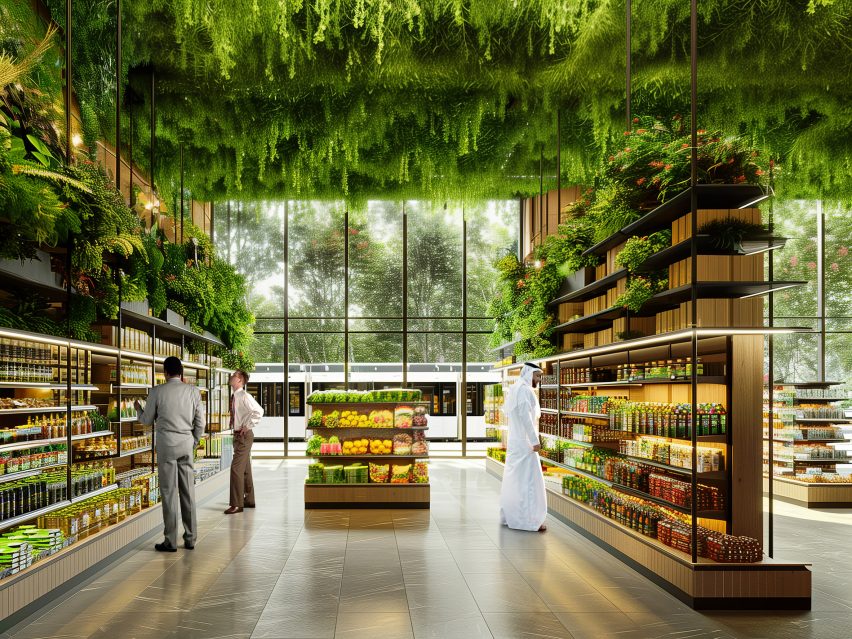Architecture studio Urb is planning to convert a 64-kilometre-long arterial road in Dubai into the “world’s greenest highway”, designed as the emirate’s answer to New York City’s High Line.
Green Spine will replace the Sheikh Mohammad Bin Zayed Road, also known as E311, with what Urb is dubbing the “world’s greenest highway”.

The road will be planted with over a million trees and tackle car hegemony by providing locals and tourists with pedestrianised walkways and a solar-powered tram system.
According to the studio, the ambition is to boost the accessibility of Dubai’s urban landscape while improving air quality and helping to cool the city.

“The Dubai Green Spine isn’t just about transit; it’s about transforming urban functionality, making the city more livable and human-centric,” said Urb CEO Baharash Bagherian.
“It challenges conventional infrastructure norms, proving that our streets can do more than facilitate car traffic; they can significantly enhance quality of life,” added Bagherian.
This project exemplifies the profound impact thoughtful, integrated urban planning can have on a city’s health and vibrancy.”

The Green Spine proposal makes Dubai the latest city to develop its version of the iconic High Line – an elevated public park on a former rail line in New York City that was designed by Field Operations with Diller Scofidio + Renfro.
In London, Field Operations is also working on Camden’s version with vPPR Architects, while in Seoul MVRDV created a “plant village” on a stretch of a 1970s highway destined for demolition.
Though a timeline has not been set out for the 64-kilometre-long landscape, the plans are being developed as part of the Dubai 2040 Urban Master Plan.
The masterplan is focused on improving the quality of life for citizens in anticipation of the city’s projected population growth to nearly eight million in the next two decades.

The plans for Green Spine are primarily focused on providing elevated and ground-level parks and pathways, accessible to both pedestrians and cyclists.
Urb said this aligns with one of the goals of Dubai’s 2040 Urban Master Plan, which is to transform the emirate into a 20-minute city, meaning residents can access key amenities within a 20-minute walk from their home.
As illustrated by the visuals, the walkways and parks will be lined with an abundance of native plants and flowers, as well as over a million trees, in an attempt to boost biodiversity.
A large focus of the project is also on the creation of a tram system, which will be powered by a large solar panel farm built as part of the project that will also power 130,000 homes in Dubai.

Several buildings will also be created along the 64-kilometre-long stretch, accommodating a mix of commercial, cultural, recreational and educational facilities for citizens.
Among them will be playgrounds, allotments and sports facilities, in an attempt to provide spaces for local communities to interact. The current proposal also includes systems to manage traffic flow and energy use through smart technology.

“Adopting a more human-centric approach means prioritizing people and green spaces over cars,” concluded Bagherian.
“The Dubai Green Spine is at the forefront of this shift, transforming Urban spaces into vibrant, healthy environments that serve as the city’s lungs and arteries,” he continued.
“This initiative promotes sustainable modes of transport and community zones over traditional car-dominated roads, thus enhancing the quality of urban life. We’re not just improving mobility; we’re creating an environment where people thrive.”
Elsewhere in Dubai, Urb has also developed a proposal for The Loop – a covered highway for cyclists and pedestrians that would wrap around Dubai. It embodies similar aims to Green Spine.
“The Loop aims to make Dubai the most connected city on earth by foot or bike,” said Urb chief executive officer Baharash Bagherian.
The renders are by Urb.

